At the heart of successful businesses are the satisfied customers who return to avail of your services, again and again!
Makes sense. But how is this related to the customer satisfaction score?
A higher number of “completely satisfied” clients means a higher CSAT (and vice versa).
This directly translates to greater business profitability, revenue growth, and customer loyalty rates.
Therefore, it is no surprise that 84% of companies saw their revenue increase when they focused on great customer service.
To help you improve your call center’s CSAT, this blog will answer the following questions:
- What is the CSAT Score?
- Why Does Customer Satisfaction Matter For Your Business?
- How to Improve CSAT?
What is Customer Satisfaction Score [CSAT]?
First things first: We will start by defining the Customer Satisfaction Score – more commonly known as CSAT.
In simple words, CSAT is a key metric that helps you understand how satisfied customers feel about the service they experienced.
A higher level of CSAT means more clients are happy with your customer service.
A low CSAT score indicates that the majority of clients are not impressed with your customer service.
In other words, a higher CSAT is the benchmark for your business’s success.
The following stats underline the significance of excellent customer service (leading to higher CSAT) for businesses:
- For every 1% increase in CSAT, custom retention rates increase by 5%.
- 81% of the global customers are happy to pay more in return for improved customer service.
You got the point, right?
How to Effectively Measure Customer Satisfaction?
Naturally, the next question in your mind must be: How can I calculate the CSAT Score?
This is how you do this:
The most common way to calculate CSAT is by using a simple survey question at the end of each call. Typically, it’s something like:
“How satisfied were you with our call center service today?”
Customers then rate their experience on a scale, often 1 to 5, where:
- 1 = Very Dissatisfied
- 5 = Very Satisfied
To calculate the CSAT score, you focus on the percentage of customers who gave a “satisfied” or “very satisfied” rating (usually 4 or 5).
Here’s the formula:
CSAT Score = (Number of Satisfied Customers / Total Number of Respondents) x 100

Sounds confusing? Let’s try to understand this with an example.
Let’s say a call center company providing online technical support sends a CSAT survey to 200 customers after each support interaction.
Here’s what they get back:
- 1 (Very Dissatisfied): 10 customers
- 2 (Dissatisfied): 20 customers
- 3 (Neutral): 30 customers
- 4 (Satisfied): 60 customers
- 5 (Very Satisfied): 80 customers
To calculate the call center’s CSAT score:
- Count the “satisfied” customers: 60 (Satisfied) + 80 (Very Satisfied) = 140 customers.
- Divide by the total respondents: 140 / 200 = 0.7.
- Multiply by 100 to get a percentage: 0.7 x 100 = 70%.
So, their score is 70%. This means 70% of their customers were satisfied with their technical support experience.
Well, this score is okay but not great.
When it comes to an excellent CSAT score, a business owner should aim for a score over 90%.
For reference, HiredSupport’s CSAT score of more than 90 represents an ideal CSAT score.
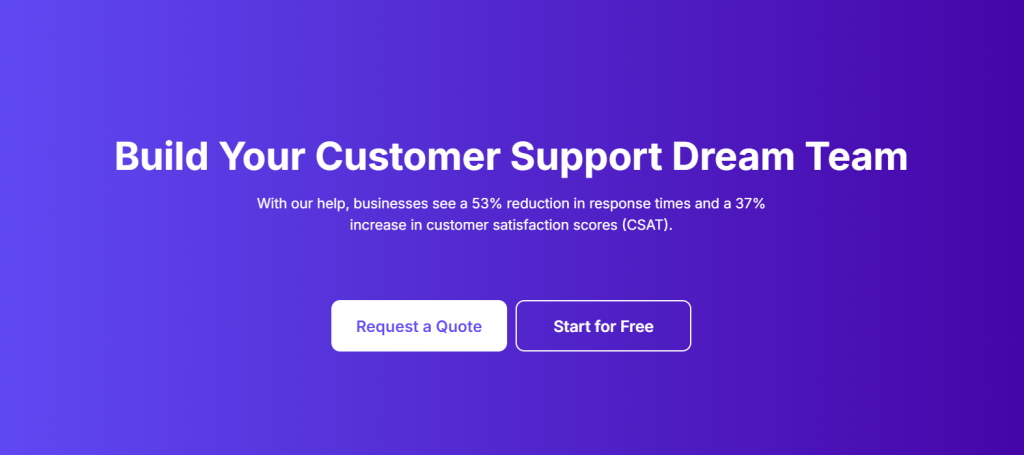
10 Tips and Tricks to Improve CSAT
Now that you have understood the importance of a higher CSAT score, it’s time to dig into the key practices you should adopt to improve this score.
1. Understand Your Customers’ Requirements
Start by listening to your customers and understanding their needs.
Really, it’s that simple. You’ve got to know what your customers actually want, not just what you think they want.
The simplest way to do this is to ask the customers themselves.
By getting feedback from those who matter the most for your business, you can improve the customer support experience.
However, keep in mind that this is not the only method to understand the expectations of your target audience.
These are some common ways that can help you in this regard:
- Request For Feedback
- Post-Call Surveys
- Keep an eye on the client’s behavior
- Use tools to analyze existing data
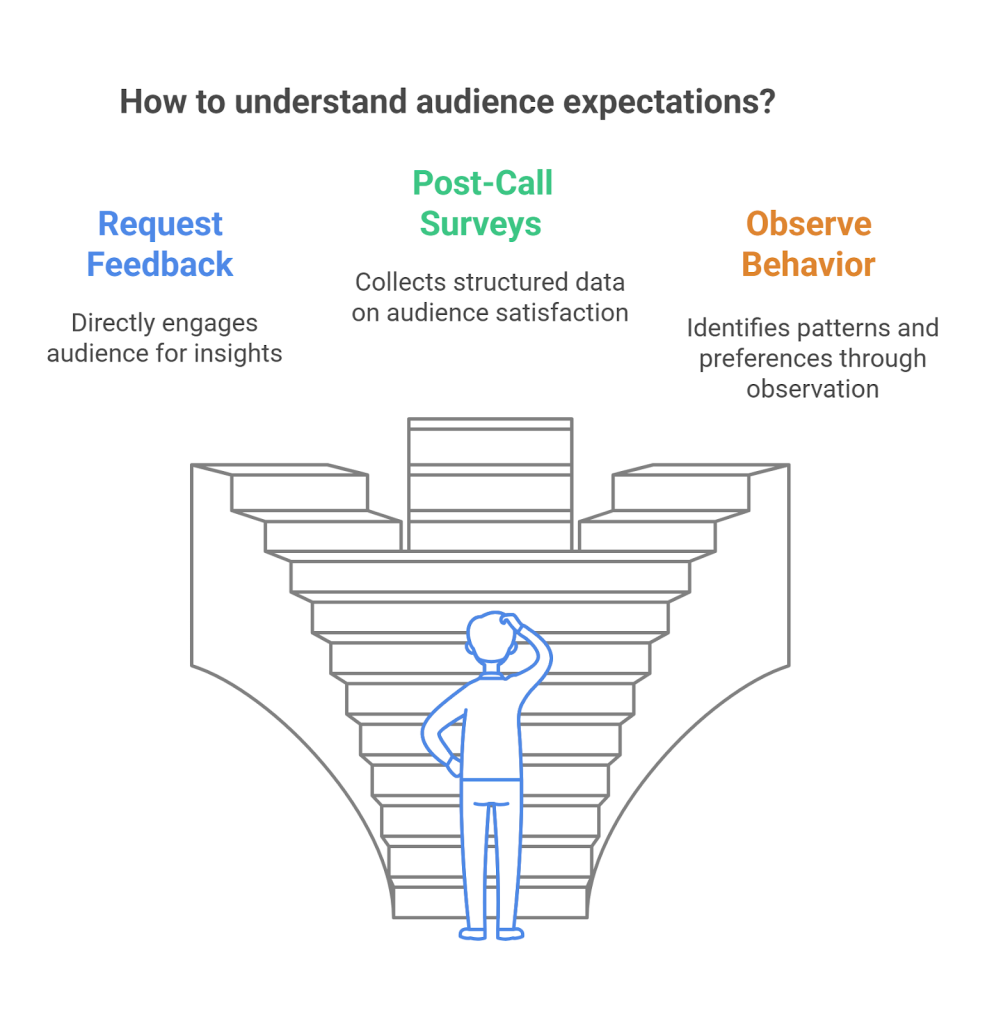
Only by having a complete understanding of what the customers are expecting from your business can you ensure a higher CSAT score.
2. Make Customer Experience Your Number One Priority
Excellent customer experience means a higher CSAT score – there’s no denying this fact.
This is why every call center owner must ensure an excellent customer experience.
There are some of the ways you can achieve this objective:
- Understand the pain point of customers
- Use a priority matrix to resolve issues in customer support service quickly
- Get feedback from clients to enhance customer experience.
- Constantly look for improvements in customer service
The result? Lower abandonment rates and higher CSAT for your business – perfectly illustrated by the following graph:
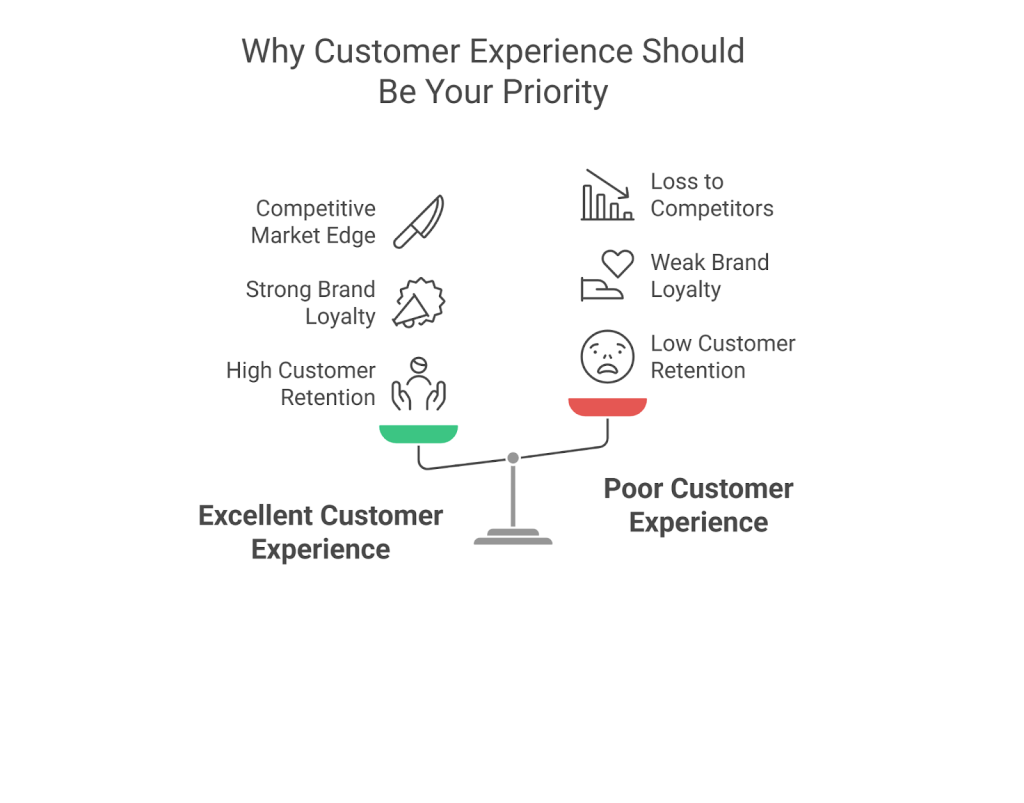
3. Instruct Your Agents to Show Empathy
Given that the call center agents are primarily responsible for smooth customer interactions, you must make sure that each agent is trained well enough to deal with customers while showing empathy during the conversations.
And by showing empathy, we mean the ability to comprehend the customer’s feelings and understand their perspective to better resolve their queries.
Here are some of the practices you can adopt:
- Really train them to listen – like, actively listen. It’s not just about waiting for their turn to speak!
- Coach them on using phrases that show they get it. Think of sentences like, “I can definitely see why that would be frustrating,” or “I understand how you’re feeling.”
- Remind all the call center agents that it’s okay to take a breath and just be human. Everyone has their off days, customers included, so being non-judgmental is key.
- Encourage the agents to ask clarifying questions. Sometimes, just saying “I understand” isn’t enough. Train them to ask open-ended questions to truly grasp the customer’s situation.
- Keep emphasizing putting themselves in the customer’s shoes. It’s the core of empathy, right?
4. Define Goals And Track Agents’ Performance
To ensure that each customer is satisfied with the customer support service and that their queries are resolved in a timely manner, it is your responsibility to clearly define targets for each agent.
The following example shows how you can set targets for the agents:
- Adherence to Schedule
Set the target of 95% adherence to schedules for each agent.
- Average Hold Time
Set the target of reducing the average hold time from 3 minutes to less than 1 minute.
And many more targets like these…..
Now, it’s your job to monitor and track their performance either manually or via tools and make sure that customers have no complaints regarding the customer service.
5. Provide a Personalized Experience
Giving customer support specific to each customer, based on what you know about them, makes those interactions much better.
After all, making your customers feel valued is integral to making your CSAT score climb.
Keep the following points in mind to ensure this:
- Offering a personalized experience to clients could be something as basic as using their first name or showing you remember their previous problems.
- Go beyond just using their first name. If you know something specific about them (e.g., “Hope you’re enjoying that new gadget you ordered last month!”), insert it into the conversation naturally.
- You can also teach your agents to anticipate the needs of the customers based on past interactions and offer rapid solutions.
In short, personalizing the tone and language as per customer’s preferences goes a long way toward ensuring a higher CSAT score.
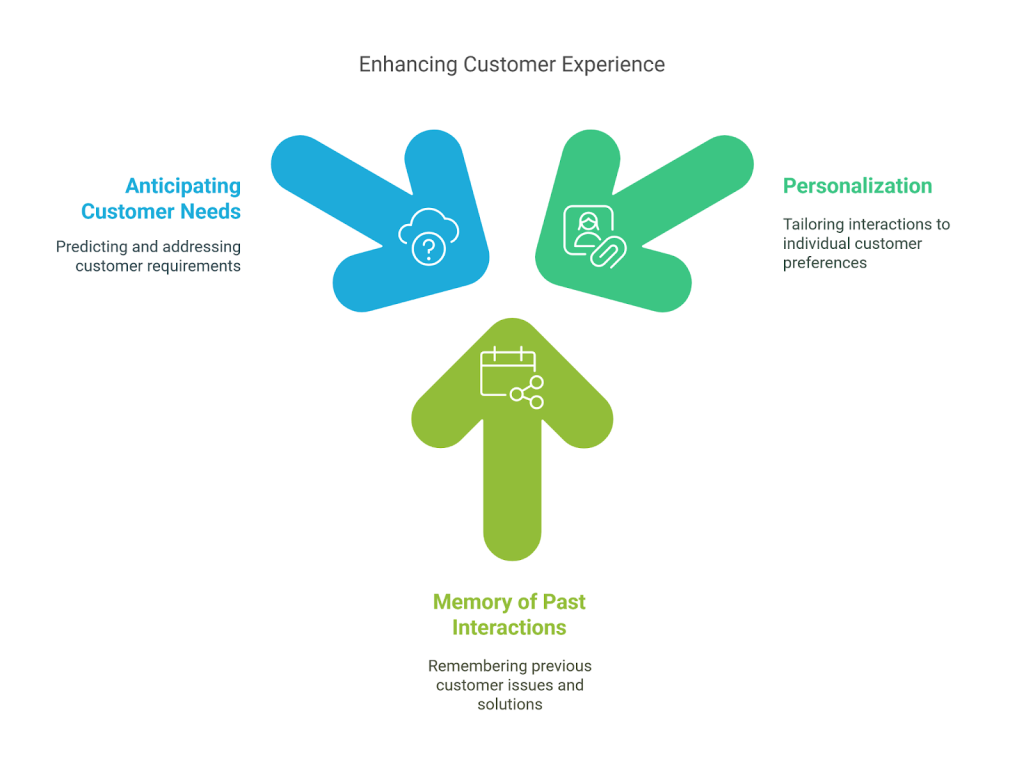
6. Provide Multi-Channel Support
Another key factor that you must consider is offering the customers not just one but multiple modes of communication.
But there’s one more thing that you must keep in mind.
To provide excellent customer service, all the communication channels must be interlinked.
Sounds confusing?
Let’s try to understand this with an example:
Let’s say a customer is a subscriber of a streaming platform (you can think of Netflix if that helps).
After one month, they started encountering billing discrepancies and buffering issues.
But here’s the thing: the customer is accessing the streaming platform via smartphone and has no access to its desktop or web application
This is how she can resolve this problem:
- The customer selects “Report A Problem” on the mobile app.
- Next, he fills out the form, highlighting the problem faced and providing his personal information.
- While scrolling through his Facebook feed, he comes across the platform’s recent updates and immediately contacts their customer support team.
- After one or two days, the platform’s customer service representative calls on his mobile phone number and guides them on how to solve this problem
And the result? The customer’s issue is resolved!
This is just one of the many examples of how omnichannel support, i.e., providing multiple communication channels for the users, takes customer experience to the next level.
And this leads to higher CSAT for your business.
7. Prioritize Swift Response To Customers
Imagine this scenario: You’re a customer, excited about a new gadget you ordered online.
But uh oh, they sent the wrong one!
Now, imagine calling customer support and being stuck on hold forever or not getting a reply for ages.
This scenario leads to a seriously unhappy customer (and a dwindling CSAT score!).
So, how do you make sure you’re lightning-fast in your responses?
These are are some of the proven tips and tricks in this context:
- Staff Smart: Make sure you have enough agents on hand, especially during peak hours. No customer likes waiting in a long digital queue, right?
- Multi-Channel Strategy: Your agents should be ready to help customers wherever they reach out – phone, email, chat, or social media.
- Quick Wins with Templates & FAQs: It is prudent to have pre-written responses and easily accessible FAQs ready for your agents to save time.
Keep in mind that your agents should prioritize timely service delivery, as it results in a measurable 1.6% increase in customer satisfaction compared to delayed service.
8. Use Technology To Your Advantage
Okay, so we’re living in a technology-dominated era, right?
It only makes sense to let cool tech help you in keeping your customers smiling!
This is how you can utilize the latest technology to improve the customer satisfaction score:
- Chatbots That Don’t Keep Customers Waiting: With the help of super-first responders, i.e, chatbots, you can ensure customers’ queries are answered 24/7.
- Call Monitoring Software: Installing monitoring software can help you analyze agent-client communication in real time.
- Getting Personal with Data: You can use certain software to record and store customer information so that you can pull up a customer’s history in a blink. So, instead of a generic greeting, agents can say something like, “Welcome back! How’s that thing you ordered last month working out?”
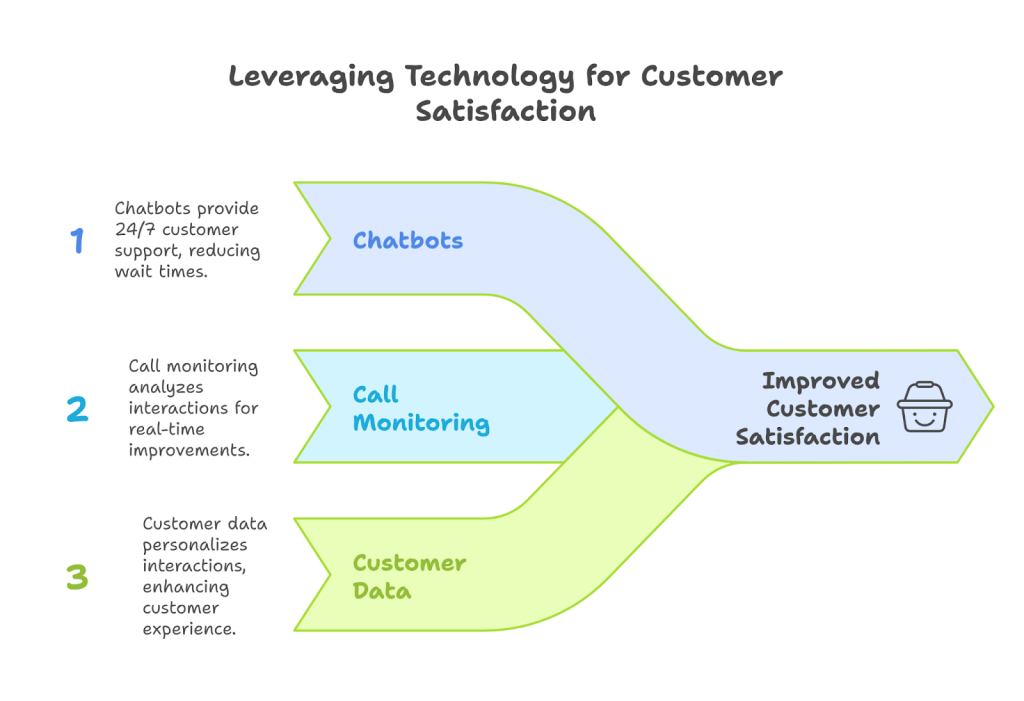
Just to give you an example, at HiredSupport, we ensure customers’ queries are quickly resolved with the help of an AI-powered chatbot.
This is one of the reasons why we have a CSAT score of over 90.
9. Manage the Workload of Agents
While setting the KPIs and assigning tasks to each agent, there’s one thing you should always keep in mind: managing agents’ workload.
It’s easy to forget sometimes that a tired or stressed agent can make serious mistakes while dealing with customers (especially if the customer is already frustrated).
After all, call center agents are human beings and not robots, right?
Following these practices can help you manage agents’ workloads more effectively:
- Listen to your agents’ complaints regarding time management issues
- Set realistic deadlines
- Use tools to keep track of each agent’s duty hours
- Evenly distribute workload
- Break tasks into manageable sub-tasks
- Use automation tools to automate repetitive and time-consuming tasks
- Support the concept of work-life balance
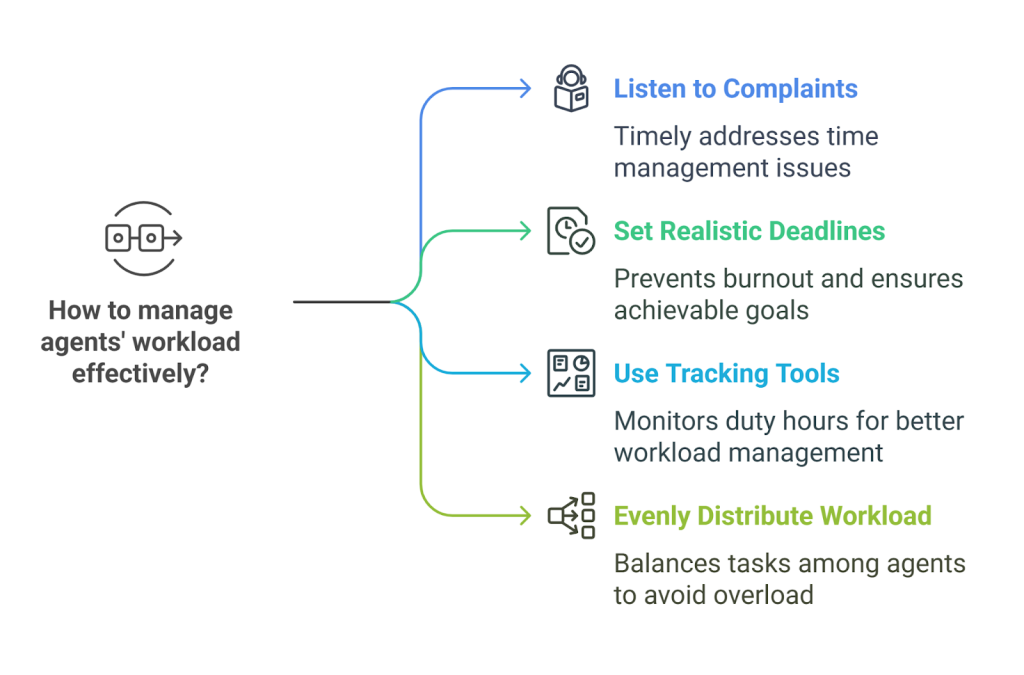
10. Learn from Past Mistakes
Okay, so you know how everyone messes up sometimes? In the call center, those little hiccups can actually help you improve customer experience.
Instead of fretting over a poor customer experience, you can use this as an opportunity to improve your CSAT score soon.
For this purpose, keep track of agents’ performance and analyze the reason behind an inefficient agent-client communication.
Get feedback from disgruntled customers and note down the improvements that can be made
Also, provide relevant feedback to the agents so that previous mistakes are not repeated.
Conclusion
Long story short, ensuring a higher CSAT drives more customers to your call center and generates more revenue for your business.
With the tips and tricks mentioned above, you can easily enhance customer satisfaction and increase your CSAT score.
If you are looking for an outsourcing call center with an excellent CSAT score, HiredSupport is your ideal choice.
With a proven track record and a CSAT score of more than 90, we provide inbound and outbound calling services for customers at just $7 per hour.
Fill out this form to get in touch with our customer support team.


